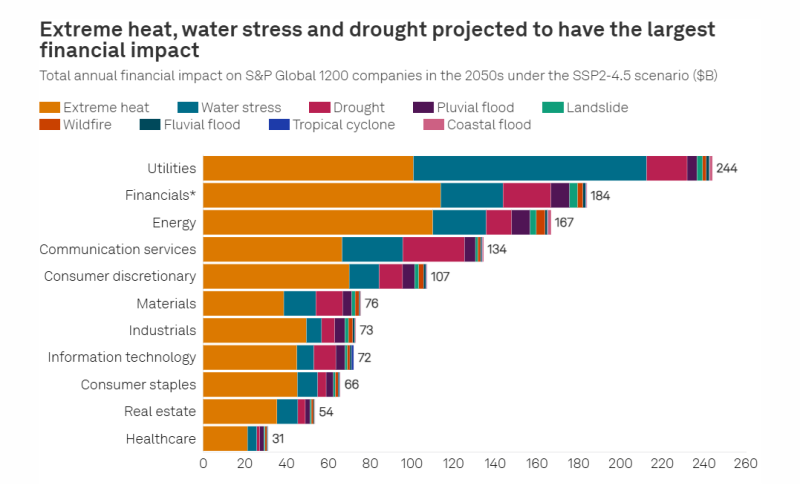A recent analysis by S&P Global Sustainable1 reveals that the world’s largest corporations are on track to incur annual costs of $1.2 trillion by the 2050s due to escalating climate-related physical risks, including extreme heat, water stress, and drought.
The utilities sector is poised to bear the brunt of these financial impacts. Projections indicate that the average electric utility within the S&P Global 1200 index could face annual costs of approximately $4.6 billion in the 2050s, assuming no adaptation measures are implemented. This sector’s significant reliance on water resources and infrastructure makes it particularly susceptible to climate-induced disruptions.
The analysis underscores that, in the absence of adaptation, the total annual cost of climate physical risks for companies in the S&P Global 1200 is projected to escalate from $885 billion in the 2030s to $1.6 trillion by the 2090s. Extreme heat, water stress, and drought are anticipated to account for 91% of these costs in the 2030s and 2050s, and 86% by the 2090s.
The geographical location of corporate assets significantly influences the type and severity of climate risks faced. For instance, power plants in South Asia and Sub-Saharan Africa are more vulnerable to pluvial floods resulting from heavy rainfall, whereas those in Latin America and the Caribbean, as well as the Middle East and North Africa, are more susceptible to drought conditions.
Despite the looming financial threats, many companies have yet to develop comprehensive adaptation strategies. Data from the S&P Global Corporate Sustainability Assessment indicates that while a majority of electric utility companies assess acute and chronic physical risks, only 62% have identified potential financial impacts, and a mere 35% have established adaptation plans tailored to their operational vulnerabilities.
The findings highlight an urgent need for corporations to integrate climate resilience into their strategic planning. Proactive adaptation measures are essential to mitigate the substantial financial risks posed by climate change, ensuring long-term sustainability and operational continuity.





















